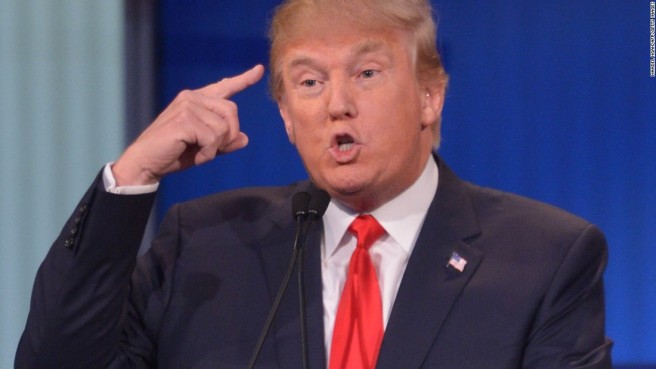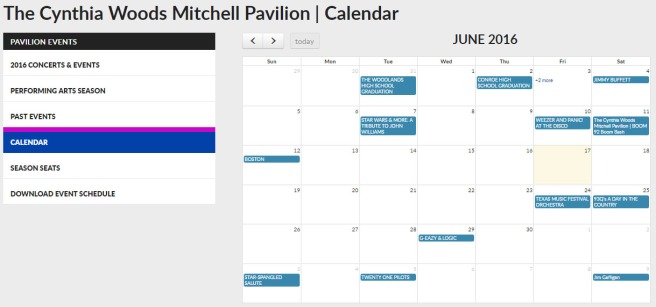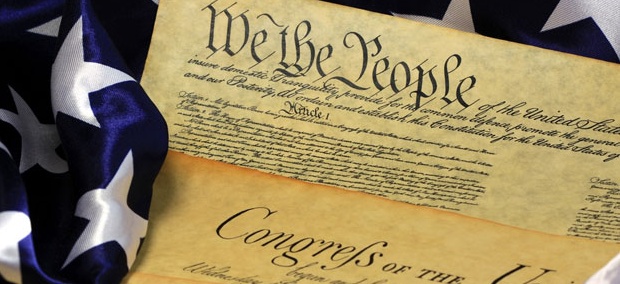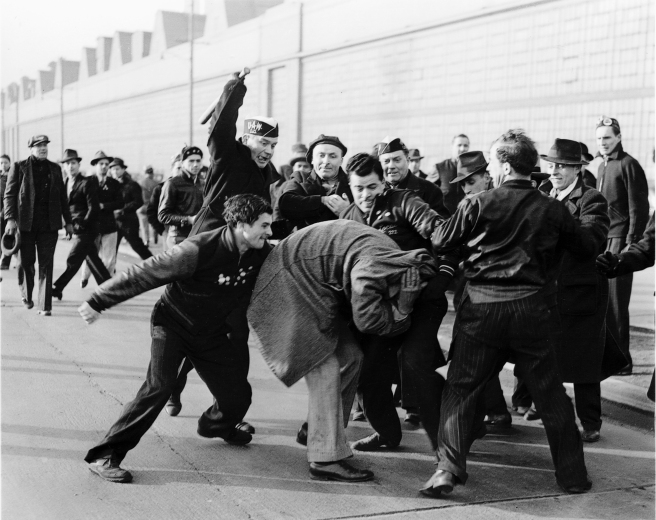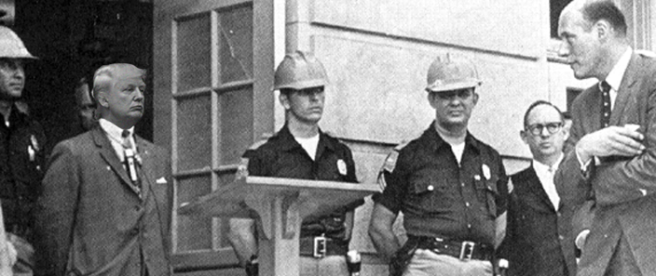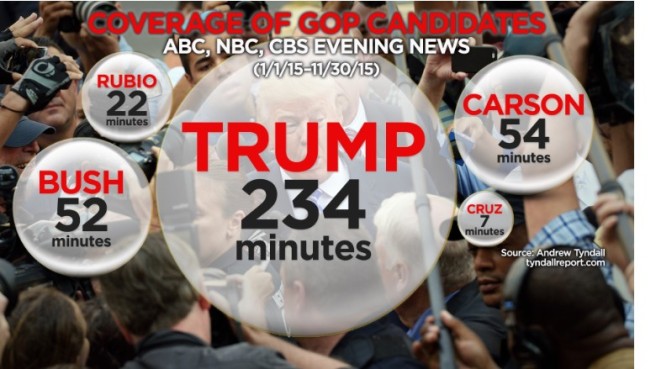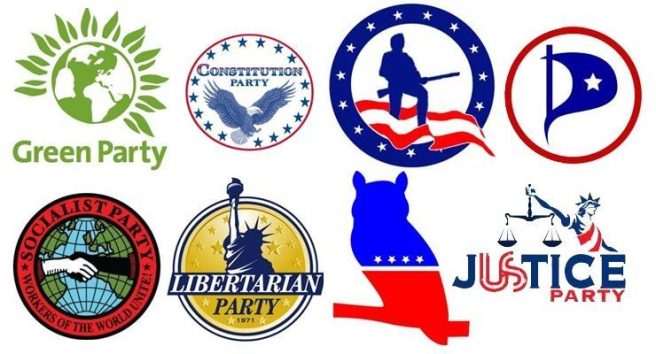
Throughout the history of the United States, with a few minor instances, the country has always been represented by two main parties. Third party/independent candidates usually split the vote of one major party or another, depending on the similartity or difference of campaign, and often force an issue to the table that isn’t being discussed. Often, it is rare to have a third party gain representation in all 50 states and outlying areas in a Presidential election, but it can occur.
What typically occurs when a third party member wants to run for higher office (most often at the federal level, as opposed to local and state), they align with one of the two majority parties – currently either Republican or Democrat. Usually, this works in spades. The independent party member aligns enough with the party they join, and they are able to cross over to the other party to work together when they do not align with their own party.
In essence, this is how government should work.
When government stops functioning in the capacity that it is designed, we most often see third parties, independent candidates, and other ideologies stand up to challenge the system. This is a healthy part of government – when members bring key issues that are being ignored or need more attention to the spotlight and, in effect, force primary candidates to answer to. This is democracy at work, and it’s a wonderful thing to see at times.
However, a third tactic of third party representation has emerged in our federal election process. This is the tactic of the third or independent party running as a majority party candidate, but attempting to fundamentally change the direction of the majority party they are running as. We’ve seen this with past candidates that identify with a third or independent party. Most recently (and prior to 2016), Libertarian Ron Paul ran as a Republican and attempted this.
Ron Paul was stopped at convention, however.
This year, we have two different Presidential candidates attempting to perform a veritable coup of the respective parties they are running under. On the Republican side, we have Donald Trump. On the Democratic side, we have Bernie Sanders. Both are inserting themselves as a party that does not fit their ideology, and are taking advantage of a system with an already established voting base in order to bring drastic change.
Some may argue that Donald Trump is not a third party candidate – but they are incorrect. He favors big government, restriction of Amendment rights, and at best can be considered a populist, but even that definition does not fit him. He favors strong authorative government, and is intolerent to dissent. He holds a strong sense of nationalism, and has been outright critical of the Republican party and leaders he claims to represent. And I’ve already covered his different party affiliations over the years.
Donald Trump has even briefly run a campaign as President under a third party. It ended disastrously, but that brief campaign illustrates best that he is a member of a third party ideology, and not the Republican party. However, instead of opting for a third party bid, he decided to run as a Republican, and instead of aligning with the party, he’s decided he is going to take over the party. And this, guys, is precisely why the GOP establishment is rejecting him and working hard to block his nomination.
Donald Trump is taking advantage of a voter base he did not build. He is using the system to gain popularity. He is changing the definition of the party and insisting that his way is right. He isn’t working together with the party or even trying to unite the party. He’s essentially building his own base and turning that base against their own leaders in order to rise ot the top. This is why the GOP is trying to stop him. There is a process to politics that he’s ignoring. He’s taking advantage of loopholes that exist to do so.
Nobody should really be surprised by this. Trump readily admits he’s done the same in the private sector – he’s taken advantage of loopholes to gain power. He manipulates the system, usually by legal methods, to push his agenda. The same has been done in the past with third party representation in a major election. Ron Paul set out with his own platform, bucking the traditional Republican platform, in order to secure the nomination. The GOP became just as angry and set out to successfully stop it.
They’ll do the same this time, and I don’t blame them.
The reason for each party to have a convention in order to nominate a candidate for the Presidential election exists for this exact purpose, and it’s not illegal, immoral, or unethical for them to do this. It is lawful, and part of the system set up by our founding fathers. The delegates we elect, either directly or indirectly, have the final vote. If those that we choose to represent us ultimately choose a different candidate, then we must respect that.
These delegates at convention have the responsibility, essentially, to choose the most qualified candidate to represent the party. The most qualified candidate aligns with the values of the party. The most qualified candidate has the best opportunity to win a national election. The most qualified candidate has the best chance to motivate voters to support other candidates of the party in running for other offices. These are the factors that delegates must consider at convention. In that, they also must consider the popular vote by their given territory. But that’s just one of many factors.
Convention rules currently dictate that some delegates are bound in the first round of voting. However, designation of delegates can be challenged at convention. We saw this in 2012, when delegates were taken off the first vote because of a loophole that Ron Paul employed to gain a majority of delegates in Maine, despite losing the popular vote. Paul manipulated the system in his favor, and the RNC stepped up and blocked that loophole. A move that Donald Trump, at least existentially, supported by thowing his support behind Mitt Romney, the eventual nominee.
Want to see how easy it was for the RNC to make this decision? Watch.
It was just that easy to block a third party candidate from nomination. Was it legal? Yes. Was it ethical? As ethical as Ron Paul manipulating loopholes to gain delegates – yes. Did the GOP block a third party in order to maintain representation by the Republican party? Yes. Will they do it again? Of course. And they should because they have the same legal rights to do so as Trump has the legal rights to run as a candidate for a party he does not represent.
If the Party heads into a brokered convention, you can rest assured the same will happen. A brokered convention all but guarantees a Republican candidate. Donald Trump has no right to oppose this, as he essentially supported the same move, without objection, and even took part in the 2012 RNC. Surely, had Mr. Trump opposed the moves taken by the RNC to protect the integrity of their party in the national election, he would have skipped out, called for a boycott, and publicly made his opposition known. None of this happened, though.
Big mistake, Donald. Big mistake.
It’s my believe that, even if enough delegates are tentatively secured (they’re not official until the convention vote), the GOP will work to align certain delegates differently in the pre-convention, using any legal means necessary. And, in the same fashion that Trump took advantage of loopholes to run as a Republican while being representative in platform of an independent party, the GOP and RNC has every right to explore and utilize these loopholes.
Donald Trump and news media pundits both warn of the “yuge” implications and negative effects this could have on the Republican party and their national ticket, but the Republican party aligned pretty quickly and supported their choice in 2012 coming out of convention when another third party candidate was blocked. The only difference is that Donald Trump is a loudmouth that won’t let it go – so there may be something there. However, don’t look for this nomination to occur without some kind of fight.
Trump is a candidate that claims he doesn’t need money or backing from special interests or PACS. He is “self-funding” (no he’s not). He has democrat and independent support, as well as republican support, to win a national election. In essence, he’s proudly and boldly proclaiming that he doesn’t need the party. Yet, he has usurped their platform and base. Seems kind of contradictory. If this were true, he’d have every obligation to run as a third party candidate – and he should have. What he’s doing currently is nothing more than opportunistic.
In the future, third party candidates have two options: adhere to the principles and platform of the party they seek to represent, or build the third party from the bottom up. It’s not impossible. Third party candidates are gaining ground at state and local level offices, and they can be nurtured. For Donald Trump, well he should have run as a third party candidate. It would have certainly given him more credibility. Instead, he’s given the GOP a good reason to kick him out. And they should.



